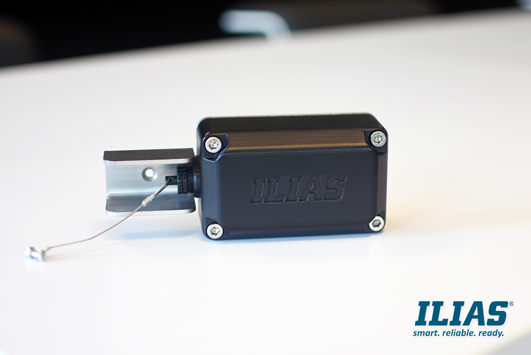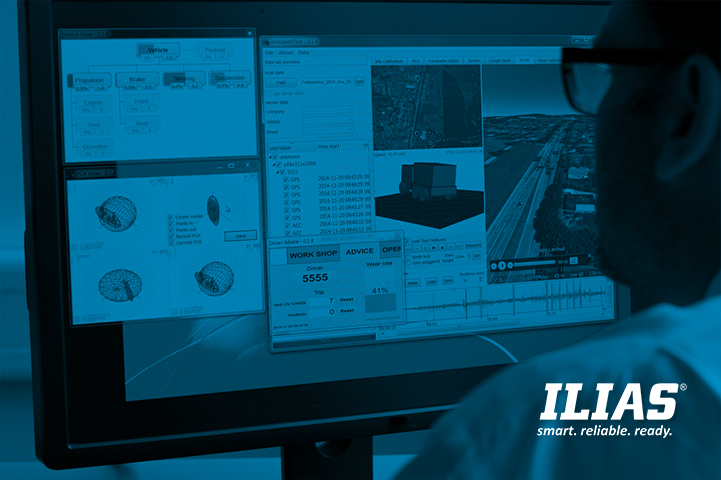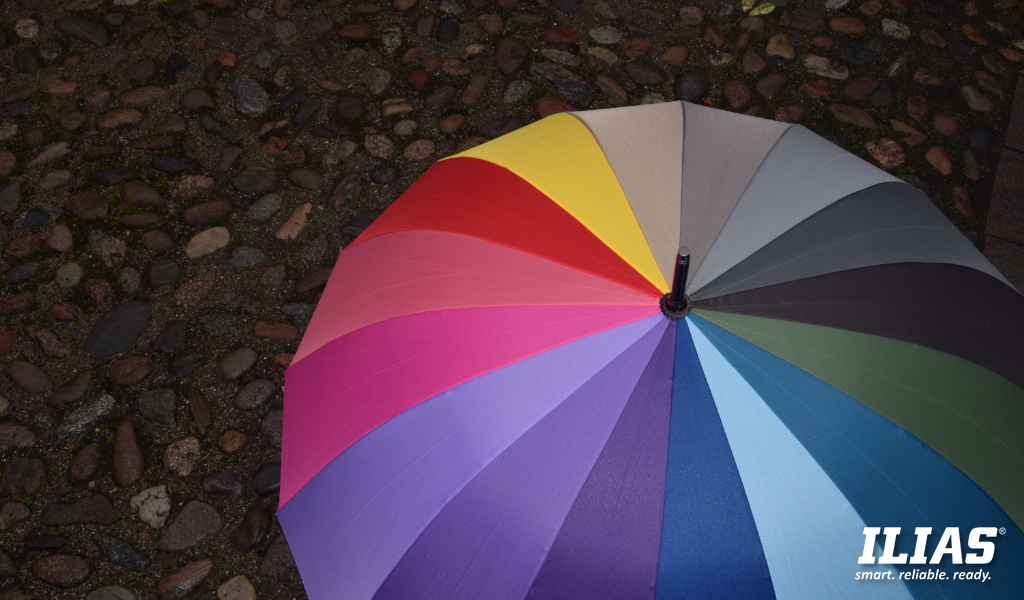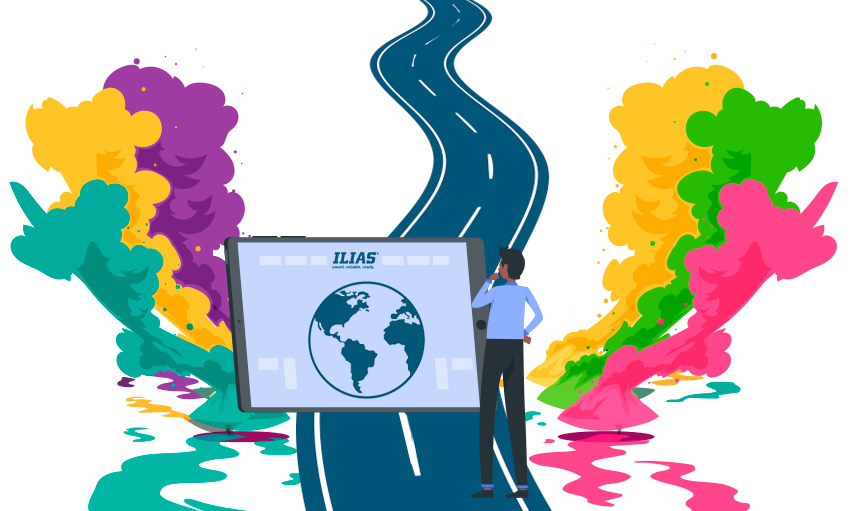ILIAS Solutions is developing an Intelligent Health and Usage Monitoring System.
Total Asset Visibility is an essential concept in every military organization. It provides users with the timely and accurate information on the location, movement, status and identity of units, equipment, materiel and supplies. It delivers capability to act upon that information to improve overall performance and take the next best action in the logistic practices.
The Belgian Defense acknowledged this approach and is ready to mature this overarching solution. The most recent development is for the Intelligent Health and Usage Monitoring System for the FOX vehicles. Colonel De Varé shares his valuable experiences.
For the last five years, Colonel Filip De Varé has held a pretty important role in the Belgian armed forces.
“Until the end of last year, I was the Director of Land Systems,” he says. “I was in charge of all rolling equipment, including ammunition. It was very, very broad. It went from, let’s say, bicycles to combat vehicles.”
Then in January of 2021, his area of responsibility quadrupled. “Now I’m director of all weapons systems,” he explains. “So, now I also have the aeronautical systems, naval systems, and support systems. It’s approaching 10,000 assets.”
One thing that has stayed constant, and made his transition as seamless as possible, is his reliance on ILIAS Solutions software. It is a software suite that provides Total Asset Visibility.
“You can trace everything that has been done with an asset. For example, if you have to know the number of hours an aircraft engine has turned, you have that at your fingertips.”
It is not just engine hours. It also tracks wear and tear on the landing gear, the age of the batteries, and the weaponreadiness. All the information is held in one place so each person using it: the maintenance crew, the weapons team, or transportation personnel, can find what they need.
“You create your own view of the data,” De Varé says. “That’s total visibility. You can even go back in time to see what has happened on a particular asset.”
The Belgian forces aren’t the only force seeking Total Asset Visibility. It is an essential concept in every military organization.
If you want to fly, you have to make sure that everything’s in place,” says Harry Corstens, Business Development Manager at ILIAS Solutions. “If you do that right, you can maximize your flying hours. That is what ILIAS is doing.”
So for ILIAS Solutions Total Asset Visibility is all about mission readiness.
“The mission is everything,” says Corstens. “So, in order to prepare for a mission with a certain fleet of vehicles or airplanes, you need to be aware of ‘What do I need to do in order to be ready with the right vehicles and the right planes at the right time in order that I can fulfil my mission?’”
Sometimes that is as simple as having the right spare parts on hand. Missing a small detail like that can undermine an entire operation.
“If you need spare parts now, you should have ordered them a half year ago. So, if you do not plan in advance, and if you don’t have insight on your work order, if you don’t know what kind of quality of people you need, what kind of spare parts you need, then you’re always too late. And when you’re too late, then you will panic. And when you panic, you pay a lot of money for maybe not getting anything.”
The odds of that scenario playing out multiply exponentially when you are, for example, taking a squadron of F-16’s to the Middle East. That’s exactly the type of operation the Belgium Air Component is undertaking right now. The unit is operating out of Jordan, and to make the mission a success, they need to send more than just planes and pilots.
“We send what we call ‘fly-away kits’ with tooling, spare parts, et cetera,” says De Varé. “We also need to deploy ground support equipment, and airfield equipment. All that is managed in ILIAS.”
On the surface, ILIAS software is designed to organize equipment, but it’s not. It actually organizes people. A mission such as the deployment in Jordan involves a lot of people. Each of them knows a fragment of the big picture, but none of them know everything.
“A lot of people are talking and the thing they are talking about should represent the same information,” according to Corstens. “Everyone has their truth, but it’s not always the same as everyone else’s view of things. And if they interpret a certain element of information, and someone else looking at that same information interprets it differently, then it gets a little bit fuzzy.”
“ILIAS provides you with one truth. So at the moment you have to make a decision, everyone is basing the decision from the same sheet of paper.”
That works perfectly in theory, but as anyone who works with data knows, your end result is only as good as the quality of the raw information you allow into the system. No software can help you make good decisions, if you are feeding it with bad data to begin with.
That’s why acquiring great data has moved to the top of ILIAS’ priority list.
“To be honest, more often than not, humans are not creating valid data. So, we are trying to get the human out of the loop,” says Corstens.

That means using barcode scanning, or when possible, sensors. Barcodes are easy to use. Anyone handling a package of parts, fuel, or even an entire plane, can just scan the barcode and the entire system knows where it is. The downside is you don’t know what has happened to it until the next time it gets scanned. That might be hours, days or months.
“But if you track and trace it with a sensor, you can know where it is in real time,” Corstens explains. “Sometimes it’s not necessary to have that granularity and sometimes it is.”
For example, consider ground support equipment such as a hydraulic power pack. That needs to be close to the plane at the exact time you want to take off. With a barcode system, you don’t know exactly where it is or if it’s serviceable, but a sensor-based system will provide those answers instantly.
“That’s the goal of what we’re doing now with total asset visibility,” says Corstens. “To give the user the information when they need it, so they can act. ILIAS provides you with the next best action.”
“The thing is, we are a software company,” Corstens explains. “We have embedded a lot of knowledge and best practices in our software, and we deliver these capabilities, via training and implementation, to the customer. But in the end, it’s the customer that needs to incorporate this in their daily job. Value is generated via adoption.”
That’s the thinking behind an exciting product called “Intelligent Health and Usage Monitoring System” (I–HUMS® ). The technical knowledge comes from the ILIAS NVO team from Denmark working closely with the Danish Technical University, but the application is a need brought forward by the users, specifically, Filip De Varé and the Belgium forces.
“It’s a development program,” he explains. “We started it in late 2017 on our new jeeps for the special operations forces.”
The goal is to monitor the usage of those assets and evaluate the effectiveness of the current maintenance protocols.
“It’s the ILIAS SmartSensor, a black box we are installing on combat vehicles that provides us with a clear view on the health of the system. For example, on a combat vehicle, after 2,500 kilometers, you have to change the oil. Is that necessary?” asks De Varé. “We’re following what has been prescribed by the manufacturer. But after a couple of years of monitoring we’ve discovered that the frequency was too high, and we’ve been changing the oil too often. Now, with the help of the I–HUMS® we’re trying to make predictions on when to execute that.”

The ILIAS SmartSensor
It wasn’t just the oil changes they were monitoring. The Intelligent Health and Usage Monitoring System also told them they were being overloaded. “People don’t fill a vehicle at the maximum weight, they use the maximum available volume,” says De Varé.
Once they were made aware of this overload situation, it was easily corrected. And that can save a lot of money.
“When we talk to people about health and usage monitoring,” says Corstens, “they’ll ask us, what’s the business case? It’s not just about collecting information, it’s being able to act on it. Nine out of ten people I speak with embrace the idea that if you know more, you can predict better, and that can make your whole system more efficient.”
Efficiency is essential for someone like De Varé, who is starting his year off with a whole lot of new responsibilities and big plans.
“We have a plan with ILIAS over the next 10 years,” he says, “to optimize that predictive maintenance and condition-based maintenance. For me, that’s a big deal.”



